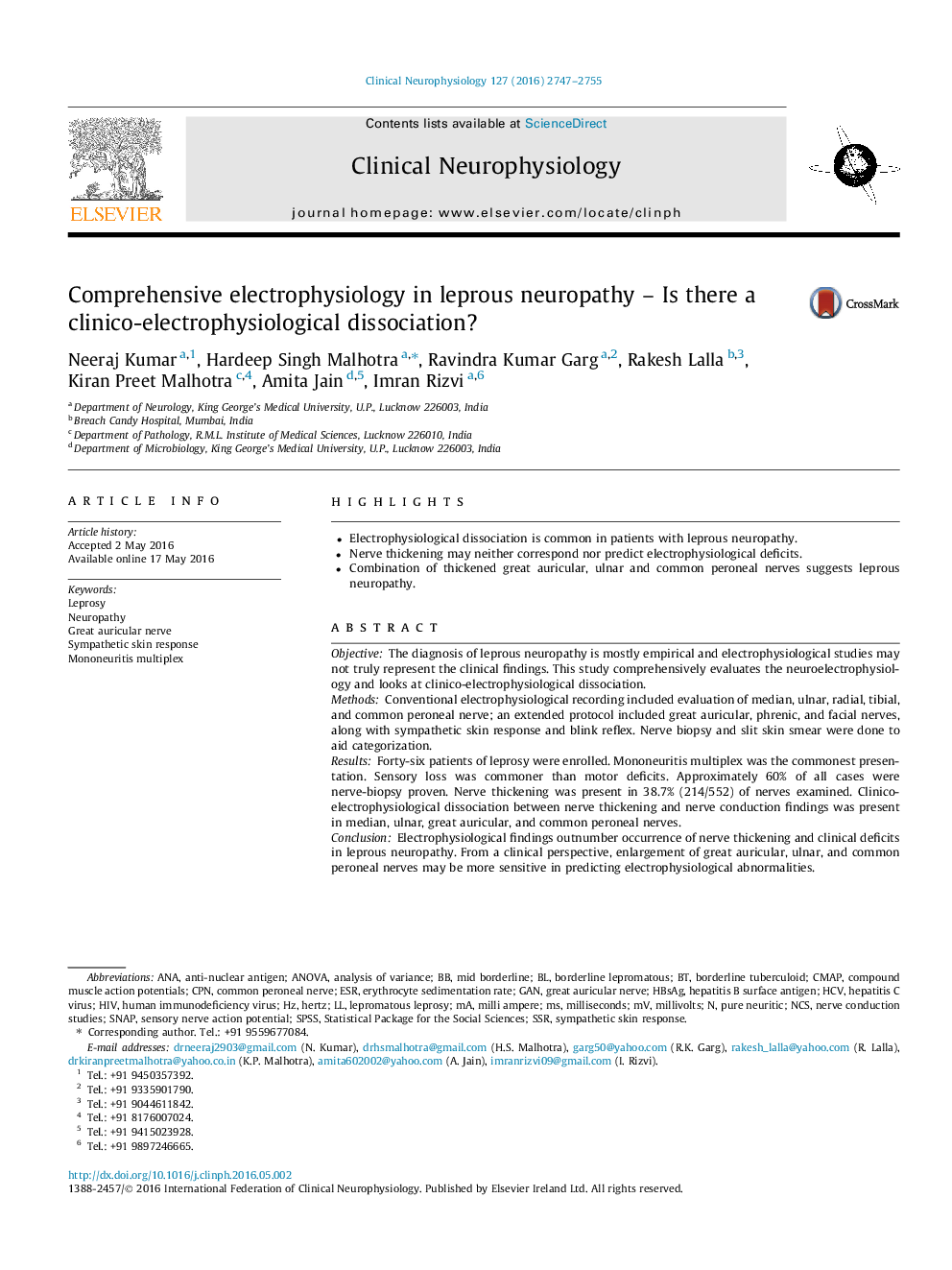| Article ID | Journal | Published Year | Pages | File Type |
|---|---|---|---|---|
| 3042670 | Clinical Neurophysiology | 2016 | 9 Pages |
•Electrophysiological dissociation is common in patients with leprous neuropathy.•Nerve thickening may neither correspond nor predict electrophysiological deficits.•Combination of thickened great auricular, ulnar and common peroneal nerves suggests leprous neuropathy.
ObjectiveThe diagnosis of leprous neuropathy is mostly empirical and electrophysiological studies may not truly represent the clinical findings. This study comprehensively evaluates the neuroelectrophysiology and looks at clinico-electrophysiological dissociation.MethodsConventional electrophysiological recording included evaluation of median, ulnar, radial, tibial, and common peroneal nerve; an extended protocol included great auricular, phrenic, and facial nerves, along with sympathetic skin response and blink reflex. Nerve biopsy and slit skin smear were done to aid categorization.ResultsForty-six patients of leprosy were enrolled. Mononeuritis multiplex was the commonest presentation. Sensory loss was commoner than motor deficits. Approximately 60% of all cases were nerve-biopsy proven. Nerve thickening was present in 38.7% (214/552) of nerves examined. Clinico-electrophysiological dissociation between nerve thickening and nerve conduction findings was present in median, ulnar, great auricular, and common peroneal nerves.ConclusionElectrophysiological findings outnumber occurrence of nerve thickening and clinical deficits in leprous neuropathy. From a clinical perspective, enlargement of great auricular, ulnar, and common peroneal nerves may be more sensitive in predicting electrophysiological abnormalities.SignificanceA comprehensive nerve conduction study including great auricular and phrenic nerves, coupled with a sympathetic skin response, may aid in detecting cases with paucity of findings since such a combination is seldom seen in other disorders.
